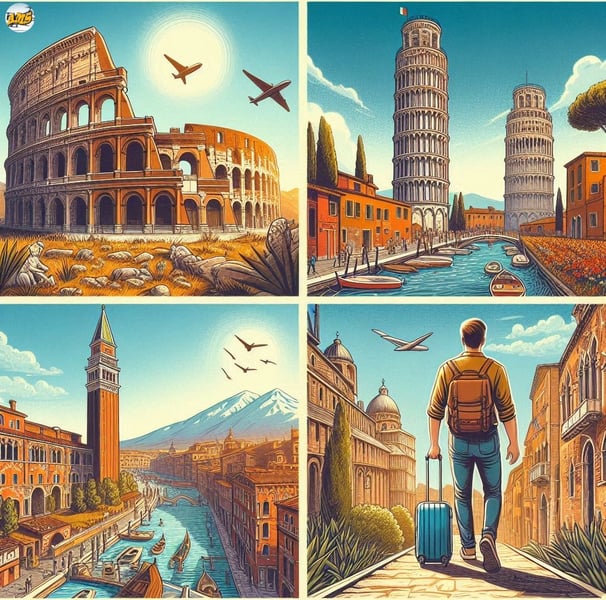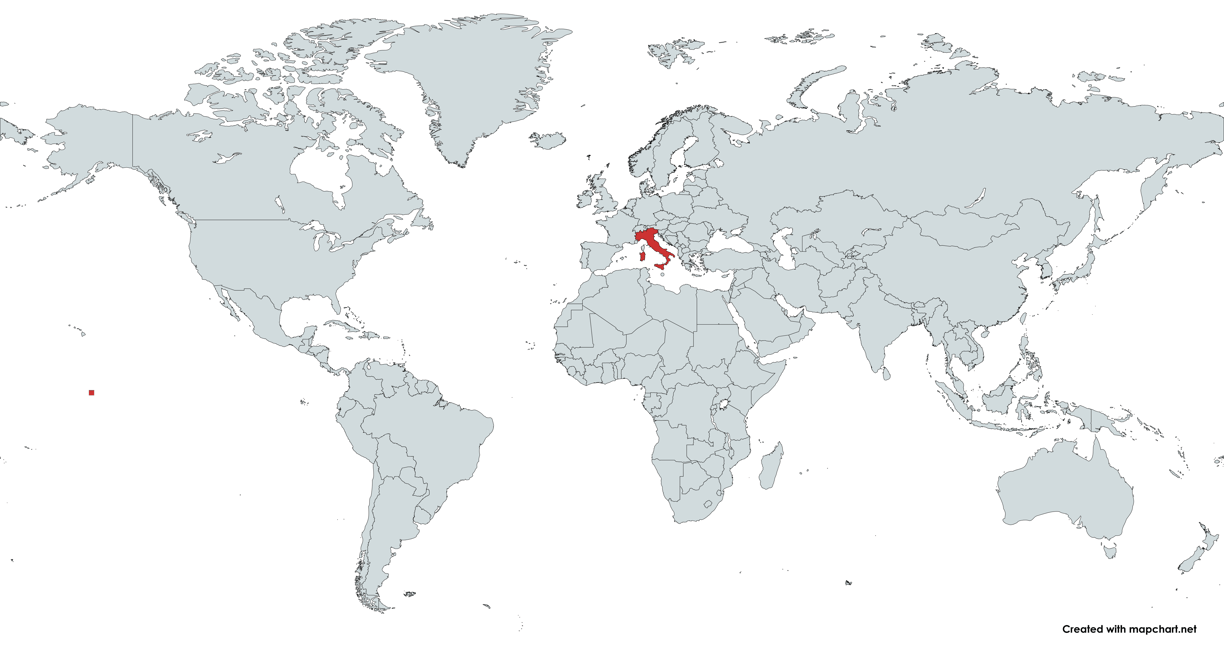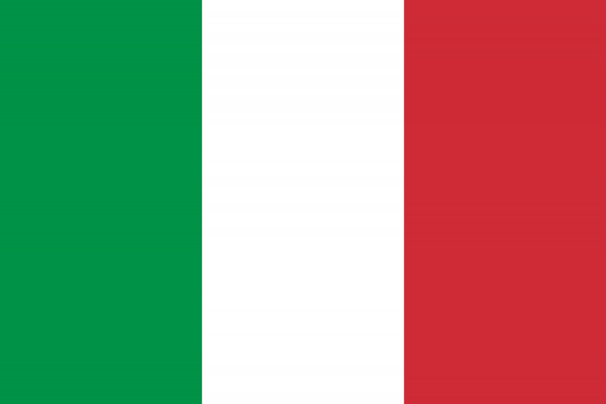
Rome, Italy
To roam around Italy
Memory Aid: Imagine yourself roaming around Italy and all the iconic places that are unique to Italy.
Association: Associate a man with a suitcase and rucksack wanding the streets of Italy and other iconic landmarks associated with Italy.


Where in the World is Italy?


The Flag of Italy


What to do and where to visit in Rome
Rome, the Eternal City, is a treasure trove of history, art, and culture waiting to be explored.
Begin your journey at the iconic Colosseum, where ancient gladiators once battled, and then wander through the Roman Forum to immerse yourself in the remnants of an empire.
Don’t miss the breathtaking Vatican City, home to St. Peter's Basilica and the Sistine Chapel, where Michelangelo’s masterpieces adorn the ceilings.
Stroll through the charming streets of Trastevere, filled with vibrant cafés and local shops, and make sure to toss a coin into the Trevi Fountain to ensure your return to this magnificent city.
End your day with authentic Italian cuisine at a traditional trattoria, savoring dishes like pasta carbonara or classic pizza.
With its rich tapestry of sights and flavors, Rome promises an unforgettable experience for any visitor.
What Countries border Italy?
Italy shares its borders with several countries, including France, Switzerland, Austria, and Slovenia.
Throughout history, these neighboring nations have experienced varying degrees of conflict with Italy. For example, during World War I, Italy fought against Austria-Hungary, which significantly affected the region's borders and relations.
Additionally, the centuries of rivalry between Italy and France, particularly over territorial claims in areas like Savoy, highlight the complex nature of their interactions.
In more recent times, conflicts may not have been as direct but stemmed from political and economic tensions within the European Union framework.
However, in modern times, these countries generally maintain peaceful relations and cooperate on various fronts, including trade and cultural exchange, contributing to a more stable and united Europe.
History & Politics of Italy
Italy has a rich and complex history that intertwines with its political evolution. Once a collection of independent city-states, kingdoms, and territories, Italy's unification in the 19th century marked a significant turning point.
The country transitioned from monarchy to a republic following World War II, when King Umberto II was exiled in 1946. Today, Italy is a democratic republic, but remnants of its monarchical past still linger in its culture and institutions.
The former royal family, the House of Savoy, remains a point of historical interest, and there are ongoing discussions about the role of monarchy in modern society.
Thus, while Italy no longer has an active monarchy, its royal history continues to influence its political landscape and national identity.
Is it safe to visit Rome?
Rome, the eternal city, is generally safe for tourists, but like any major city, caution is advised.
Visitors should be aware of pickpockets, especially in crowded areas such as public transport, popular attractions like the Colosseum, and bustling markets. It's wise to keep an eye on personal belongings and stay aware of your surroundings.
Additionally, be cautious when using ATMs; choose ones located in well-lit areas and during daylight hours.
While the city is rich in history and culture, featuring stunning landmarks like the Vatican and the Trevi Fountain, it's essential to travel with a sense of awareness. Following these basic safety tips will help you enjoy your visit to Rome while minimizing any potential risks.
Overall, with the right precautions, you can immerse yourself in the beauty and history of this remarkable city without significant concerns.
Explore
Learn World capitals through images and associations.
© 2025. All rights reserved - Air Mobility Services
Terms of Use


